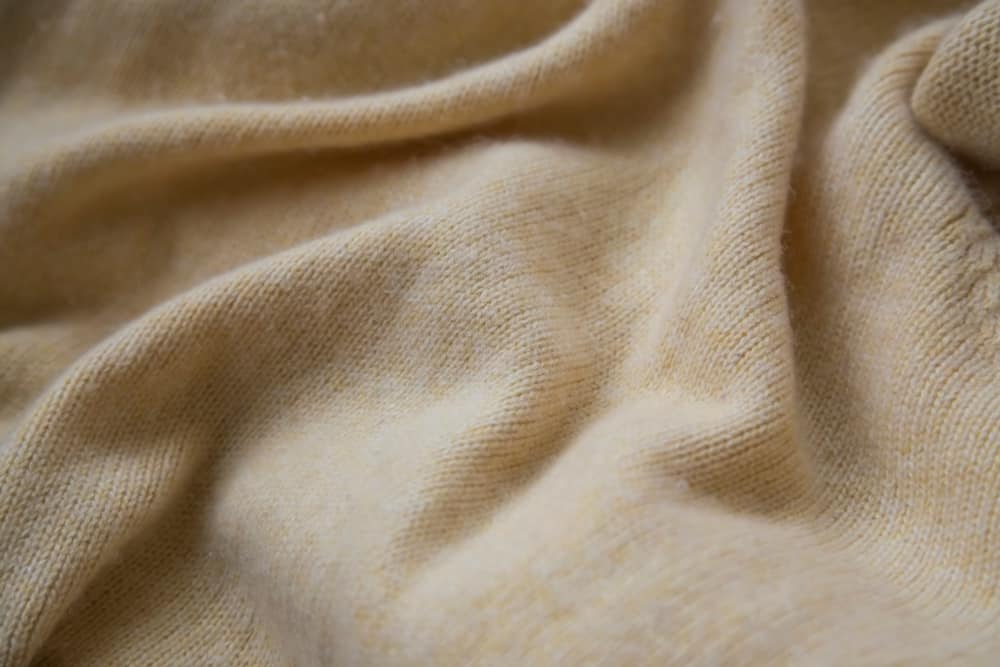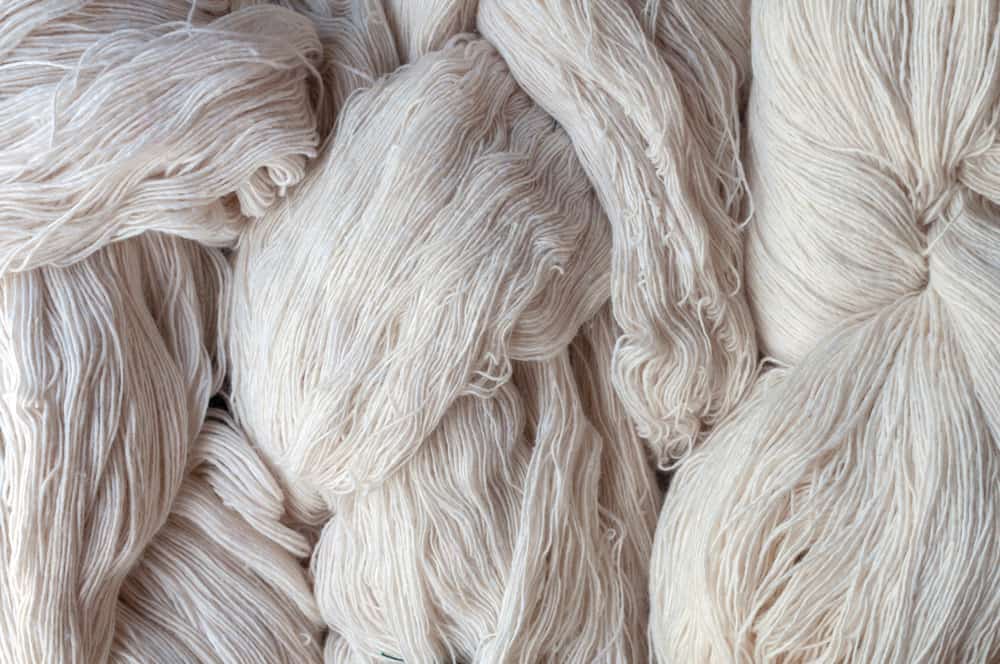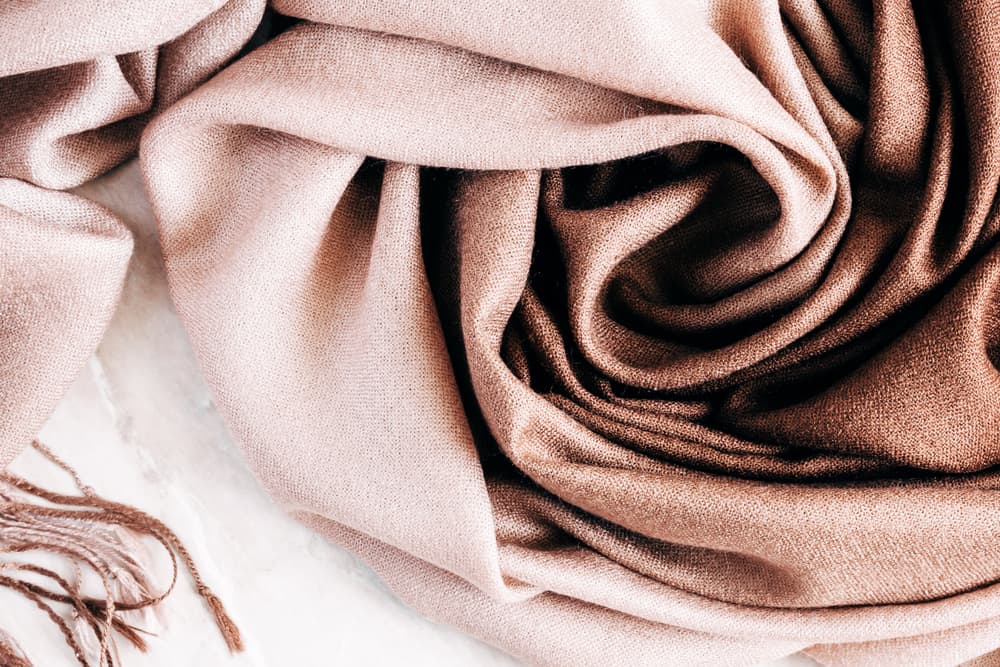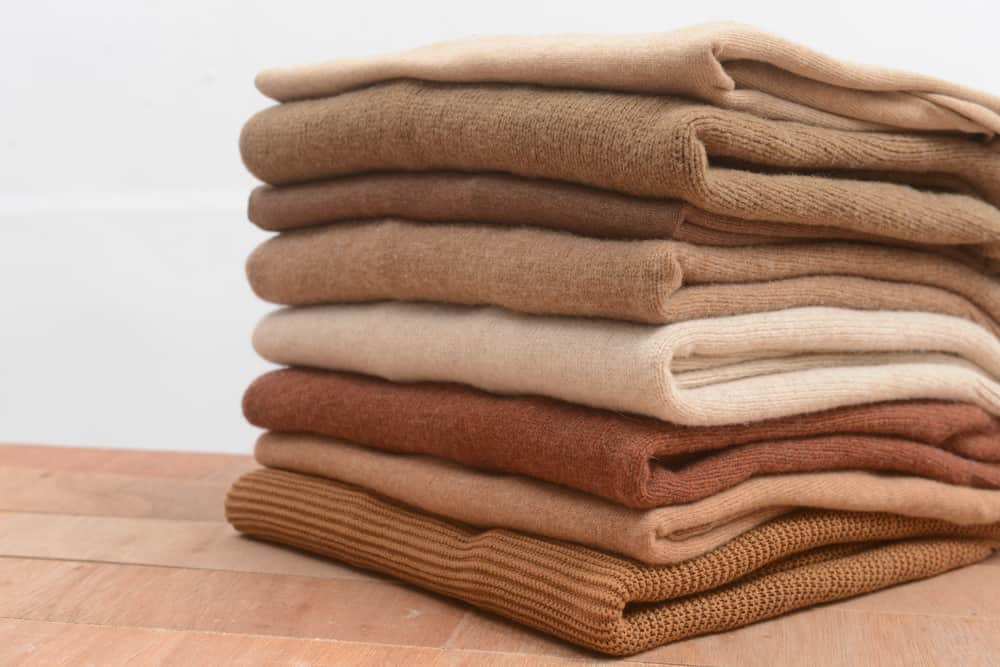Cotton and cashmere both are natural materials that are strong, soft, and long-lasting. While one comes from a plant, and another from animal wool, both materials can ed to make sweaters, sheets, scarves, and blankets. Each material has pros and cons, and can be combined with other fabrics and fibers.

Cotton and cashmere are two materials that are both natural, durable, and soft. Both have their benefits and can be used in several applications. Understanding the differences between the two and understanding the pros and cons of each can help you make a better-informed decision when choosing between the two materials. Below, let’s take a closer look at these two natural materials in more depth.
Table of Contents
- Where Do They Come From?
- How is Each Made?
- What are the Pros of Cotton and Cashmere?
- What are the Cons of Cotton and Cashmere?
- What Can You Make From Each?
- FAQs
Where Do They Come From?

Both cotton and cashmere are natural materials. Cotton comes from the cotton plant. The plants are grown, fibers collected, and then spun into thread or yarn. The yarn can then be transformed into different fabrics and materials, sometimes combined with other strong, durable natural materials or added synthetic fibers to give the fabric additional strength or flexibility.
Comparatively, cashmere comes from an animal’s wool. Cashmere is made from wool that comes from a Cashmere goat or a pashmina goat. These goats are rare and live in cold areas of the world that forces them to grow thick and wooly hair to keep them warm.
Usually, these goats can be found in China, Mongolia, or the Himalayas. In the spring or early summer, the wool is shed, collected, separated, and spun to create cashmere yarn or thread. This product can then be woven to create cashmere fabric, which can be transformed into clothing or material.
How is Each Made?

Today, much of the cotton manufacturing process is automated. The fluffy fibers are plucked by machine, and they are spun into thread or yarn using an automated process to stretch, clean, and intertwine the strong cotton fiber. Not only does the automation process helps to speed up the process, but it helps to keep the relative cost of cotton low, making this an affordable yet durable material.
Unlike cotton, much of the cashmere wool manufacturing process must be completed by hand. The wool is collected once it is shed, and then a person must separate the coarse topcoat from the wooly undercoat by hand. Further, a person must wash and weave the cashmere wool by hand to create cashmere material.
Because of the lengthy and labor-intensive process to create cashmere material, this natural fiber is often quite costly, especially when compared to the price of cotton.
What are the Pros of Cotton and Cashmere?

Both cotton and cashmere are wonderful materials that are useful, durable, and long-lasting. Cotton is easy to produce and is an affordable and adaptable material. Cotton is a natural material that easily blends with other natural fibers or can be blended with synthetic materials to create a hybrid fabric.
Cotton is lightweight, strong, and affordable. This material can be made into anything from cotton sheets to cotton sweaters, and it is soft and comfortable.
Cashmere too has a range of benefits, and cashmere fiber is highly sought after due to its extensive beneficial properties. Cashmere is natural and breathes well, allowing you to stay warm in the winter or cool in the summer. The warmth you get from a cozy cashmere sweater is unparalleled.
This lightweight material is durable and strong and will last for years if cared for properly. Further, pure cashmere is unbelievably soft and can be used to make anything from a wool sweater, to a blanket, to a lightweight shawl or scarf.
What are the Cons of Cotton and Cashmere?

Unfortunately, both cotton and cashmere have some downsides when it comes to these natural materials. Cotton, although easy to make and affordable, is not as soft as cashmere. The fabric is also not nearly as durable and long-lasting as cashmere and does not breathe as well as the natural cashmere wool. Further, cotton is not very good at keeping the heat in, and it can be difficult staying warm in the winter or cool in the summer when wearing cotton.
While cashmere is wonderful material and fabric, it too has some downsides. Cashmere is extremely rare and challenging to collect, making it difficult to produce extensive articles of clothing. The goats that make the wool are very rare, and the yarn is difficult to make and must be made by hand. This fact means that usually, the price of cashmere is exceptionally high compared to other comparable materials.
What Can You Make From Each?

The options are endless when it comes to what you can make from either cotton or cashmere. Just as you can have a turtleneck or sweater made of high-quality cashmere, you can also have garments made from cotton.
The feel and texture may differ between the two materials, but you can rest assured that the garment will provide warmth and softness that will keep you happy through the winter months. It is also common to have gloves, scarves, socks, sheets, or a cardigan made from either cotton or cashmere.
FAQs

While both cotton and cashmere are natural materials that are beneficial for several uses, there are some stark differences between the two. Understanding the ins and outs of cashmere and cotton can help you make informed choices regarding working with or purchasing either. We have put together this list of commonly asked questions related to cotton and cashmere.
What is the difference between cotton cashmere and regular cashmere?
Regular cashmere is usually the same material as pure cashmere. Usually, pure cashmere consists of 100% cashmere fiber. Cotton cashmere, comparatively, is a cashmere blend that mixes some cashmere fibers with some cotton fibers. This blend usually is more affordable and is easier to wash and care for.
What is the difference between cashmere and pashmina?
Cashmere and pashmina are very similar, both providing soft, warm, and breathable fabric created from wool. Pashmina fiber is slightly thinner and lighter and must be woven by hand. Cashmere fiber is a little bit thicker, and if careful, can be woven by a machine. This fact means that pashmina is often more expensive than cashmere but is also much softer.
What are the differences between wool and cotton?
The major differences between wool and cotton have to do with how the material is made and the benefits of each material. Wool is a natural material that comes from sheep or goat fur. The fur is then cleaned, separated, and spun to create yarn or thread that can be used to weave together fabric and material. Cotton is also a natural material that comes from a plant. The cotton fiber is also cleaned, separated, and woven together to create cloth or material.
Wool is very breathable and can keep you warm in the winter or cool in the summer. It is strong and durable and can last for years with the right care. Further, wool is a very strong fiber that largely resists stretching. Cotton fiber can be strong when combined with a synthetic fiber, but in general, is not as strong as wool.
Further, cotton does not have the same strength and durability, will not last as long as wool, and will often lose its shape. Cotton can be mostly made with a machine, and the weaving process is simple and inexpensive. It follows that cotton is often much more affordable than cashmere and is more readily available for consumers.




